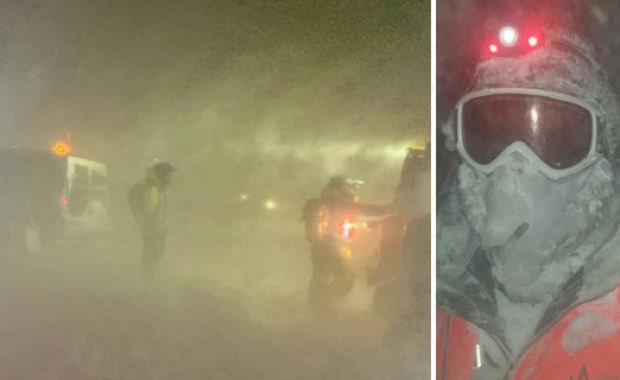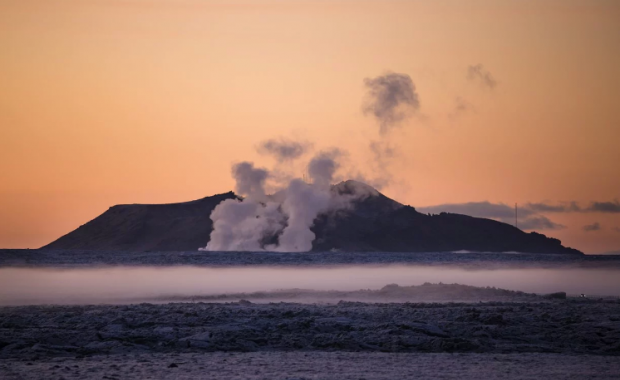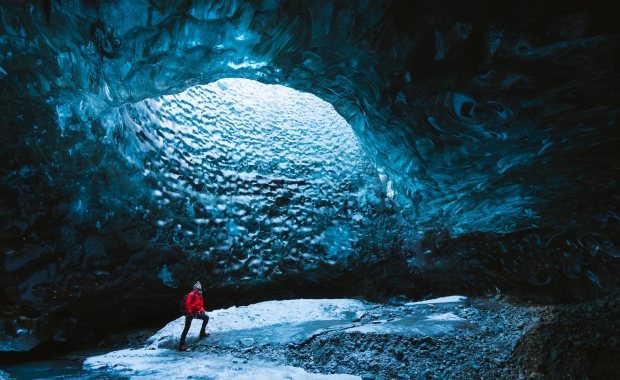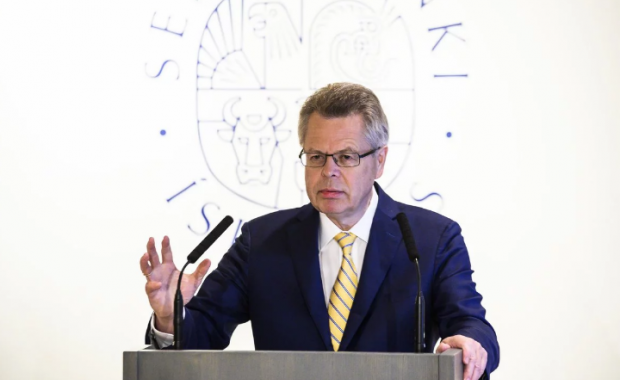One of Iceland's most deadly volcanoes Öræfajökull is kept under close surveillance after a new cauldron was discovered in the ice cap of the volcano's caldera last week. Öræfjajökull has been showing signs it was waking up from centuries of slumber, with growing seismic and geothermal activity in recent weeks. The volcano is responsible for one of the second deadliest eruption in Icelandic history.
Signs the volcano is stirring from its slumber
The Icelandic Civil Protection Agency declared an uncertainty phase for the sub glacial volcano on Friday. Satellite images and aerial photos had revealed that a new ice-cauldron had formed within the volcano's caldera. The cauldron is about 1 km (0.6 mi) in diameter and it reflects a recent increase in geothermal activity within the caldera. It is unclear whether the geothermal activity increased suddenly or has been growing more gradually. Changes in geothermal activity are likely associated with growing volcanic activity, although scientists have stressed that there is no sign of an imminent eruption.

Scientists at the Icelandic Meteorological Office believe geothermal water has been released from the caldera, causing a section to collapse to create the new cauldron. The water has been released into the glacial river of the Kvíárjökull outlet-glacier on the south-eastern flank of Öræfajökull glacier. The river has had a distinctive smell of sulfur for nearly two weeks. A third sign of growing activity in the volcano is an increase in seismic activity which has been recorded for the last few months.
Read more: Scientists determine sub-glacial volcano Bárðarbunga is showing increased geothermal activity
Öræfajökull is one of two major volcanoes hidden beneath Vatnajökull glacier which have shown growing activity in recent weeks and months. Bárðarbunga, in the north-western part of the glacier, has also been showing growing signs of activity. Bárðarbunga and Öræfajökull are two of the most powerful and dangerous volcanoes in Iceland. Despite both being located under Europe's largest glacier, the two volcanoes are otherwise unconnected.
A terrifying volcano

Öræfajökull is considered to be one of the most powerful volcanoes in Europe. It erupts in giant steam-blast eruptions, also known as phreatic or ultravolcanian eruptions. The 1883 Krakatoa eruption was a steam-blast eruption.
A 1362 steam blast eruption in Öræfajökull was the second deadliest eruption in Icelandic history. It is also considered to be one of the largest tepthra eruptions in the world in the last 1000 years. It destroyed one of the most prosperous farmland regions in South Iceland, killing all inhabitants and livestock at 20-40 farms in a region which was known then as Litla-hérað. Following the eruption, which deposited 10 cubic kilometers of volcanic material over fields and farms in the region, it's name changed to Öræfi, which translates as Wasteland in modern Icelandic.
Two popular tourist destinations could be affected

Two of Iceland's most popular tourist destinations are located in the foothills of Öræfajökull: Skaftafell visitor center in Vatnajökull National Park and Jökulsárlón glacial lagoon. The Icelandic Civil Protection Agency estimates that it will have a 20 minute warning before any eruption in the glacier.
Civil Protection uncertainty phase/level is characterized by an event which has already started and could lead to a threat to people, communities or the environment. At this stage the collaboration and coordination between the Civil Protection Authorities and stakeholders begins. Monitoring, assessment, research and evaluation of the situation is increased. The event is defined and a hazard assessment is conducted regularly.
One of Iceland's most deadly volcanoes Öræfajökull is kept under close surveillance after a new cauldron was discovered in the ice cap of the volcano's caldera last week. Öræfjajökull has been showing signs it was waking up from centuries of slumber, with growing seismic and geothermal activity in recent weeks. The volcano is responsible for one of the second deadliest eruption in Icelandic history.
Signs the volcano is stirring from its slumber
The Icelandic Civil Protection Agency declared an uncertainty phase for the sub glacial volcano on Friday. Satellite images and aerial photos had revealed that a new ice-cauldron had formed within the volcano's caldera. The cauldron is about 1 km (0.6 mi) in diameter and it reflects a recent increase in geothermal activity within the caldera. It is unclear whether the geothermal activity increased suddenly or has been growing more gradually. Changes in geothermal activity are likely associated with growing volcanic activity, although scientists have stressed that there is no sign of an imminent eruption.
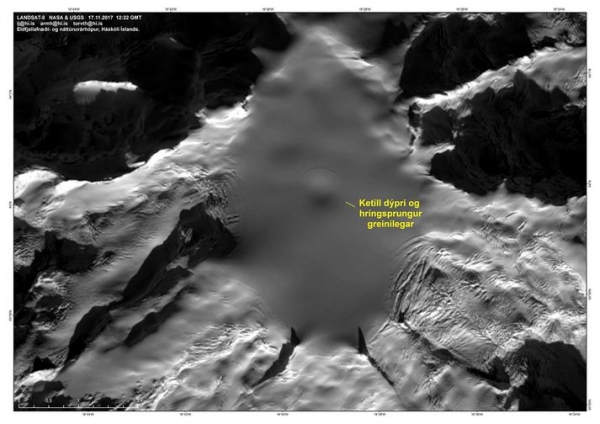
Scientists at the Icelandic Meteorological Office believe geothermal water has been released from the caldera, causing a section to collapse to create the new cauldron. The water has been released into the glacial river of the Kvíárjökull outlet-glacier on the south-eastern flank of Öræfajökull glacier. The river has had a distinctive smell of sulfur for nearly two weeks. A third sign of growing activity in the volcano is an increase in seismic activity which has been recorded for the last few months.
Read more: Scientists determine sub-glacial volcano Bárðarbunga is showing increased geothermal activity
Öræfajökull is one of two major volcanoes hidden beneath Vatnajökull glacier which have shown growing activity in recent weeks and months. Bárðarbunga, in the north-western part of the glacier, has also been showing growing signs of activity. Bárðarbunga and Öræfajökull are two of the most powerful and dangerous volcanoes in Iceland. Despite both being located under Europe's largest glacier, the two volcanoes are otherwise unconnected.
A terrifying volcano
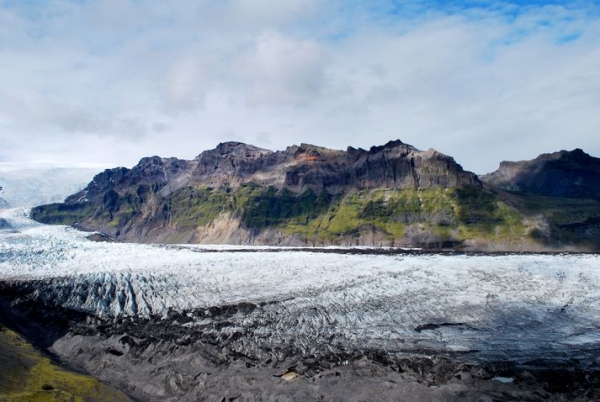
Öræfajökull is considered to be one of the most powerful volcanoes in Europe. It erupts in giant steam-blast eruptions, also known as phreatic or ultravolcanian eruptions. The 1883 Krakatoa eruption was a steam-blast eruption.
A 1362 steam blast eruption in Öræfajökull was the second deadliest eruption in Icelandic history. It is also considered to be one of the largest tepthra eruptions in the world in the last 1000 years. It destroyed one of the most prosperous farmland regions in South Iceland, killing all inhabitants and livestock at 20-40 farms in a region which was known then as Litla-hérað. Following the eruption, which deposited 10 cubic kilometers of volcanic material over fields and farms in the region, it's name changed to Öræfi, which translates as Wasteland in modern Icelandic.
Two popular tourist destinations could be affected
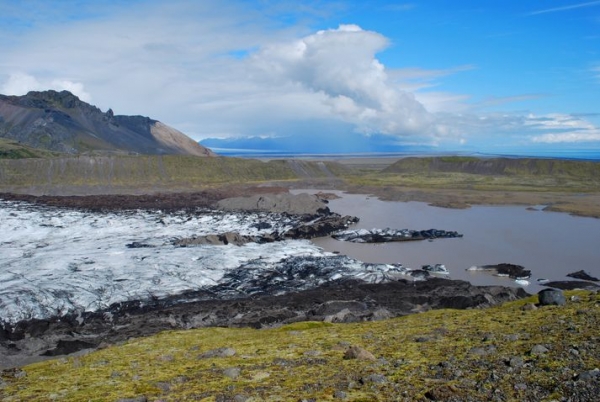
Two of Iceland's most popular tourist destinations are located in the foothills of Öræfajökull: Skaftafell visitor center in Vatnajökull National Park and Jökulsárlón glacial lagoon. The Icelandic Civil Protection Agency estimates that it will have a 20 minute warning before any eruption in the glacier.
Civil Protection uncertainty phase/level is characterized by an event which has already started and could lead to a threat to people, communities or the environment. At this stage the collaboration and coordination between the Civil Protection Authorities and stakeholders begins. Monitoring, assessment, research and evaluation of the situation is increased. The event is defined and a hazard assessment is conducted regularly.




